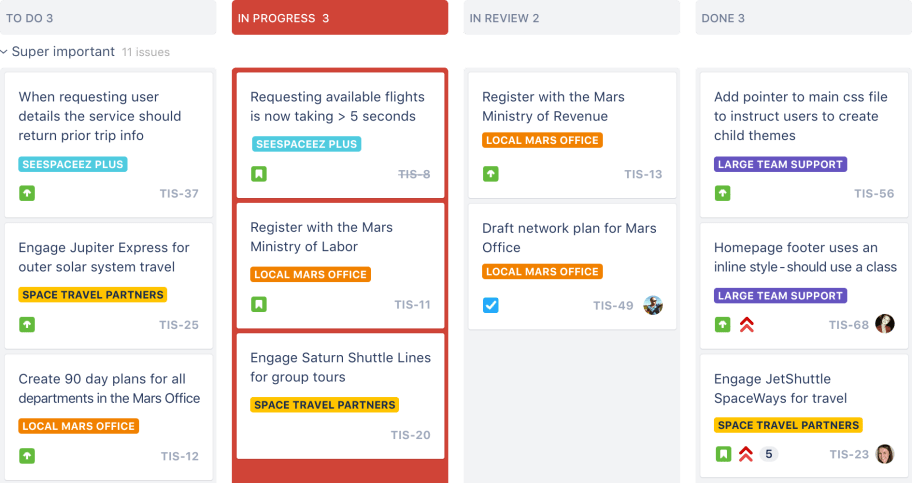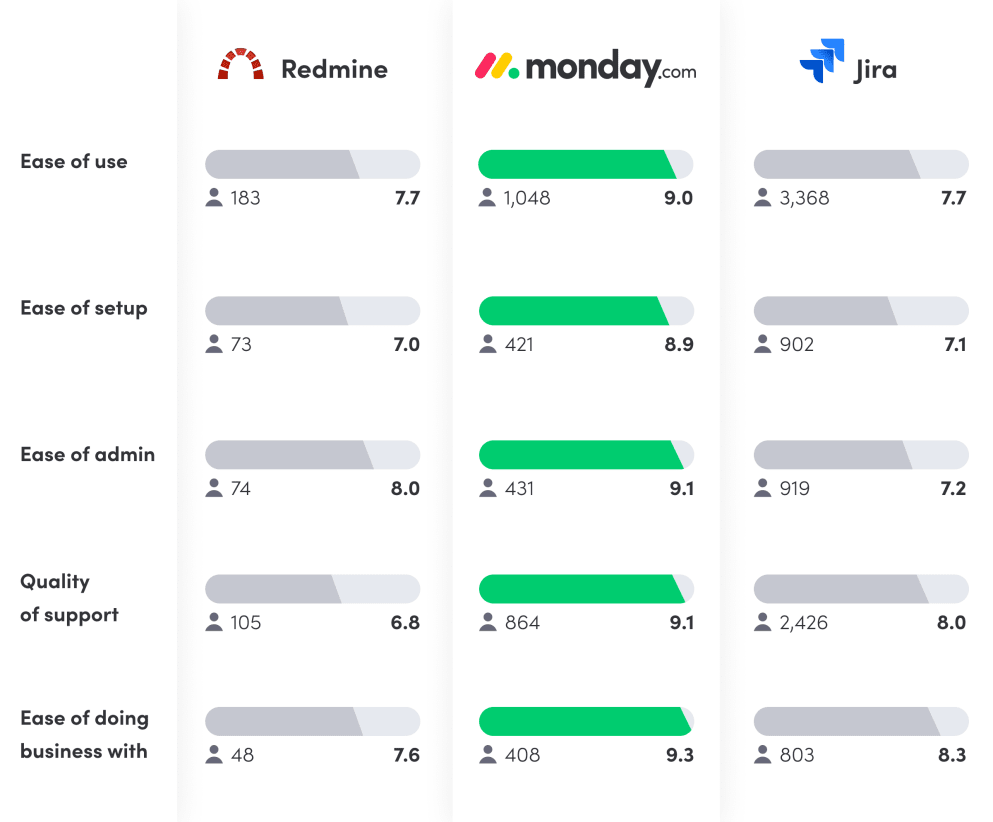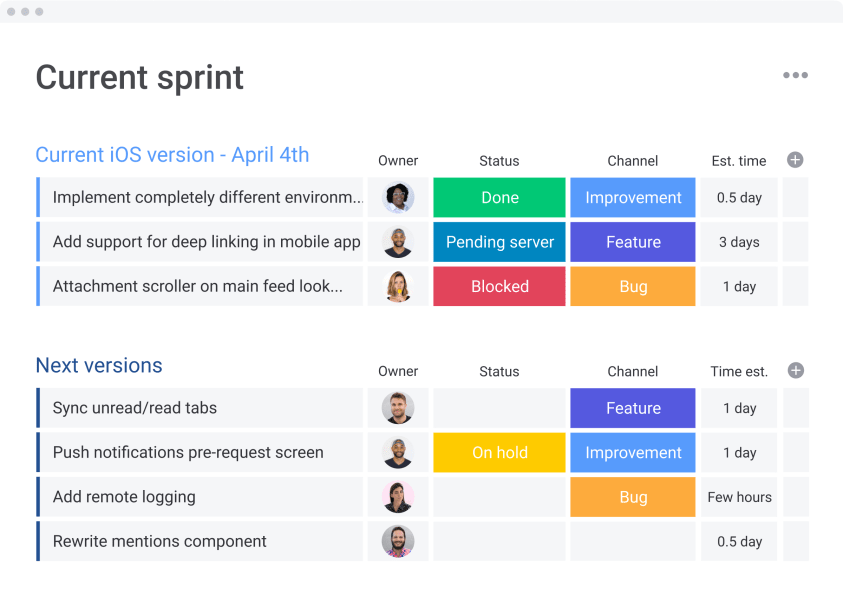When it comes to project management and issue tracking, Redmine and Jira are two popular choices.
While these tools might seem similar at first glance, they do have quite a few differences.
Let’s take a look at what exactly Redmine and Jira do, and which tool (or another alternative, say, like monday.com) is the perfect icing on the proverbial project management cake.
What is Redmine?
Redmine is an open-source project management and issue management application. It’s cloud-based and free to use, though it may not be as visually-pleasing as some of its other competitors.
Redmine is focused on a few primary features:
- Supporting multiple projects
- Offering customizable role-based access control
- Providing a dynamic issue tracking system

What is Jira?
Jira is designed to help software teams plan and track their projects using agile project management—meaning, it’s also a project management tool.
Since Jira was designed specifically for software teams, it mainly targets software developers, teams, and project managers working on software-related products and projects.
Jira is focused on a few primary features:
- Offering both Scrum and Kanban boards for issue management
- Providing an effective bug tracking system
- Supporting agile reporting of progress and backlogs

Related: Jira work management
What are the differences between Redmine and Jira?
TL;DR — Both Redmine and Jira are well-suited for software development teams. However, Jira has a more visual workflow, and has paid options.
Redmine features
Redmine’s project management interface is a list of tasks, called issues. Users can customize the description, status, type, and, due dates for each task.
Each project can have multiple sub-projects as well.
For example, a marketing campaign for company AP will have different tasks for the content and design teams. Each of these teams’ tasks can be compiled under separate sub-projects under the overall company AP project.
Managers can also create private projects that are only visible to specific team members.
Jira features
Jira is a project management system primarily designed for software teams using the agile methodology.
Users can choose a Kanban board or Scrum board for their project.
In a Kanban board, there’s a column for each workflow step. You can create cards for each task or issue with all the relevant details. The card starts in the first column and moves through each step in the workflow.
Not to make this about us (again!), but we also offer Kanban options, too!
How much do Redmine and Jira cost?
TL;DR — Redmine is free to use, whereas Jira has 4 different tiers.
Redmine pricing: Free forever
Redmine requires no payment.
You just register for an account and gain access to all the features. You might have to pay for plugins or third-party integrations though.
Jira pricing: Free and paid options
Jira has 4 pricing plans:
- Free: All of Jira’s essential features, including automation, are available for free. However, the Free plan is limited to 10 users and 2 GB of file storage.
- Standard: Managers can add up to 10,000 users and the file storage limit is increased to 250 GB. Audit logs and advanced permissions are also available.
- Premium: This plan offers unlimited file storage, a guaranteed 99.9% uptime, and 24/7 premium support. You can also archive projects and gain admin insights.
- Enterprise: This plan lets you add unlimited users across unlimited sites. It also enables Atlassian’s centralized security and governance controls, has a 99.95% uptime service level agreement, and organization-level billing.
Still looking for a Jira and Redmine alternative and figuring out which monday.com plan is best for you? Check out our recent blog post all about it.
What about customer service and integrations?
TL;DR — Redmine offers no direct customer support. Users must create a ticket for a problem or use the public forum or wikis for queries. Jira offers email or phone support for paid packages.
Redmine’s customer service: forums or nothing
Redmine’s major disadvantage is the lack of a customer support team. Users are left to handle issues using the community forums or the wiki page. They can also raise a ticket but there is no guaranteed response time.
While the wiki page is quite detailed, users might need immediate support given the tight deadlines often involved in project management.
Jira’s customer service: levels, levels, and more levels
Jira’s free users must rely on the community forum or self-help resources for any issues. Users on the paid plans can raise support tickets through the website.
For paid packages, Jira divides issues into 4 categories:
- L1 – Application Down
- L2 – Serious Degradation
- L3 – Moderate Impact
- L4 – Low Impact/General Inquiry
For Standard users, the Initial Response Time (IRT) is 2 hours for an L1 issue and extends to 2 business days for an L4 issue. Support hours are also limited to 9 hours per day based on local time.
Premium and Enterprise users have lower IRTs and have 24/7 support for L1 and L2 issues. Enterprise users also have a dedicated support phone number.
Customer reviews

Jira reviews:
Jira has better customer reviews by a mile. The tool has a 4.2/5 rating on G2 with 3,600+ reviews.
Redmine reviews:
Redmine has a 4.0/5 rating on G2 with around 200 reviews.
So which one, Redmine or Jira?
While both options are good at what they specialize, neither tool properly addresses complex project management needs of many project teams who aren’t in the development realm.
And on that note, we’d like to introduce ourselves: monday.com — the project management platform that manages anything and everything.
Why monday.com?
monday.com is a comprehensive workspace platform that can be customized for all your project management needs. Be it a technical, design, or marketing project, monday.com has your back.

Here are just some of the endless features that monday.com offers:
- Hundreds of templates to kickstart projects
- User-friendly, visual interface that is perfect for both beginners and pros
- 8 different visual workflows, including Kanban, Gantt chart, and Timeline
- Endless automation capabilities
- 40+ third-party integrations for better collaboration
- Add forms to projects for more efficient information distribution
Still not convinced? Here’s a backlog template you can try out for free for 2 weeks.
And hey, did you know monday.com offers a seamless integration with Jira?
Related: Asana vs. Jira, monday.com vs. Jira, Jira vs. Basecamp, Jira vs. Trello, Jira alternatives, monday.com alternatives

